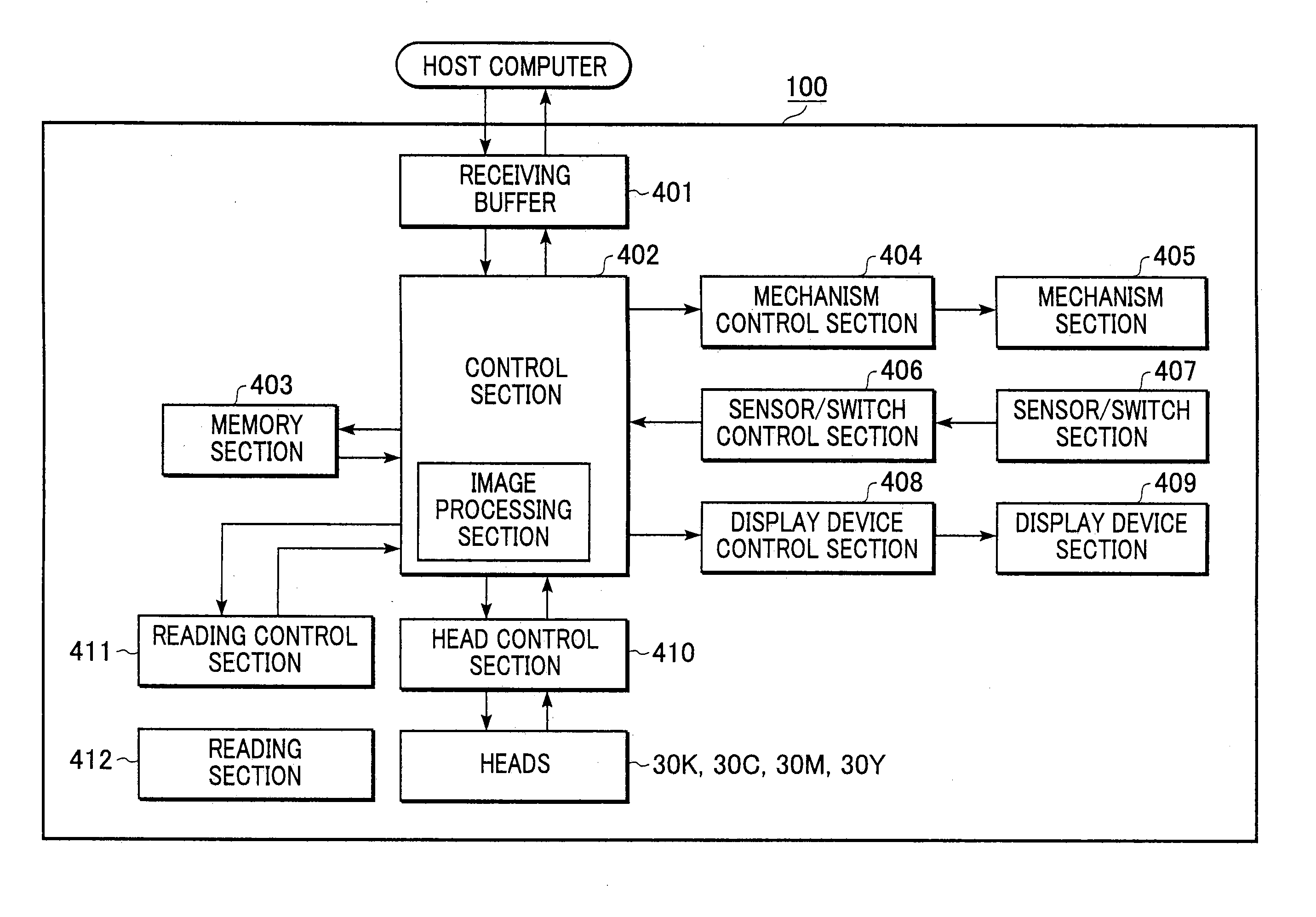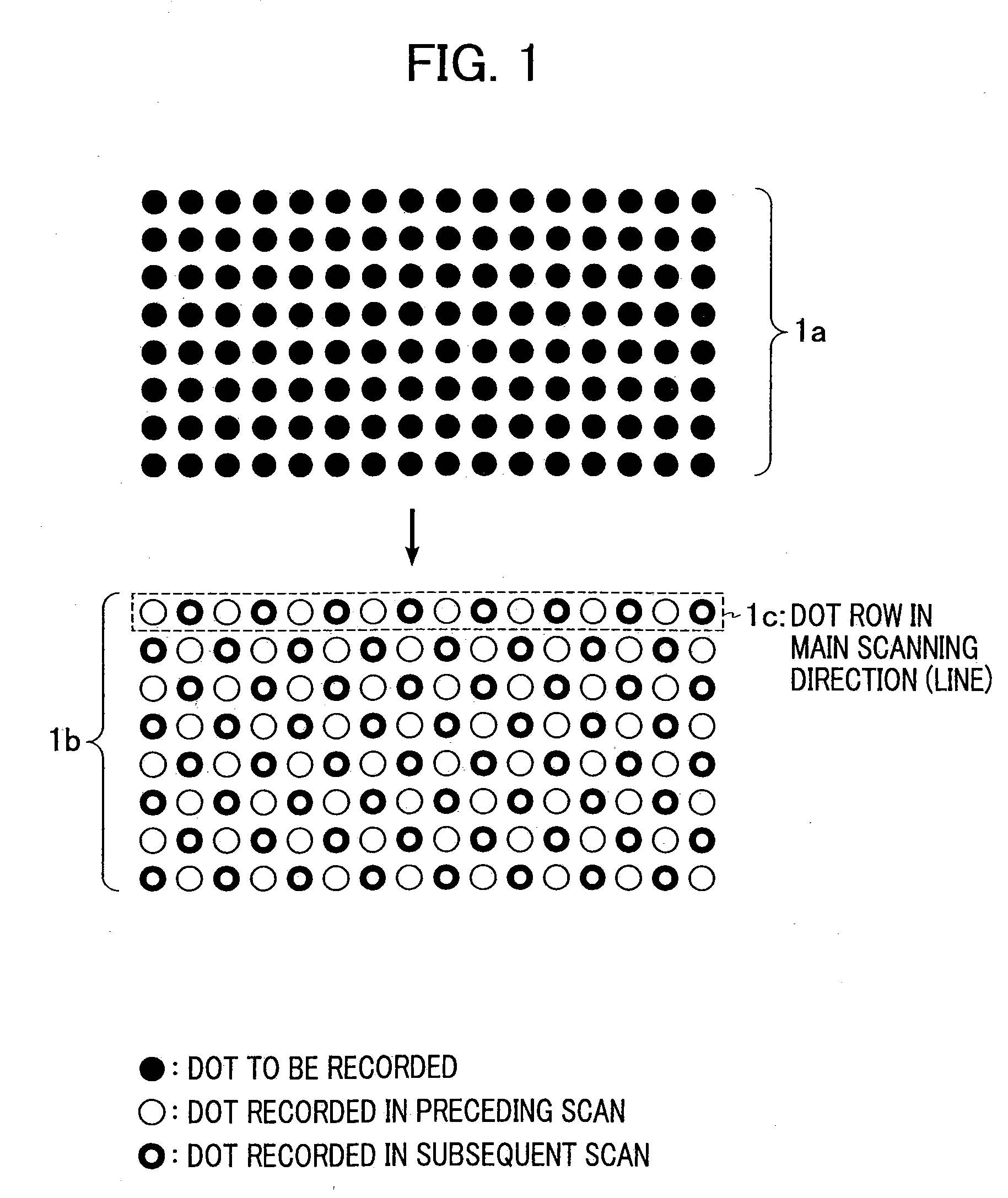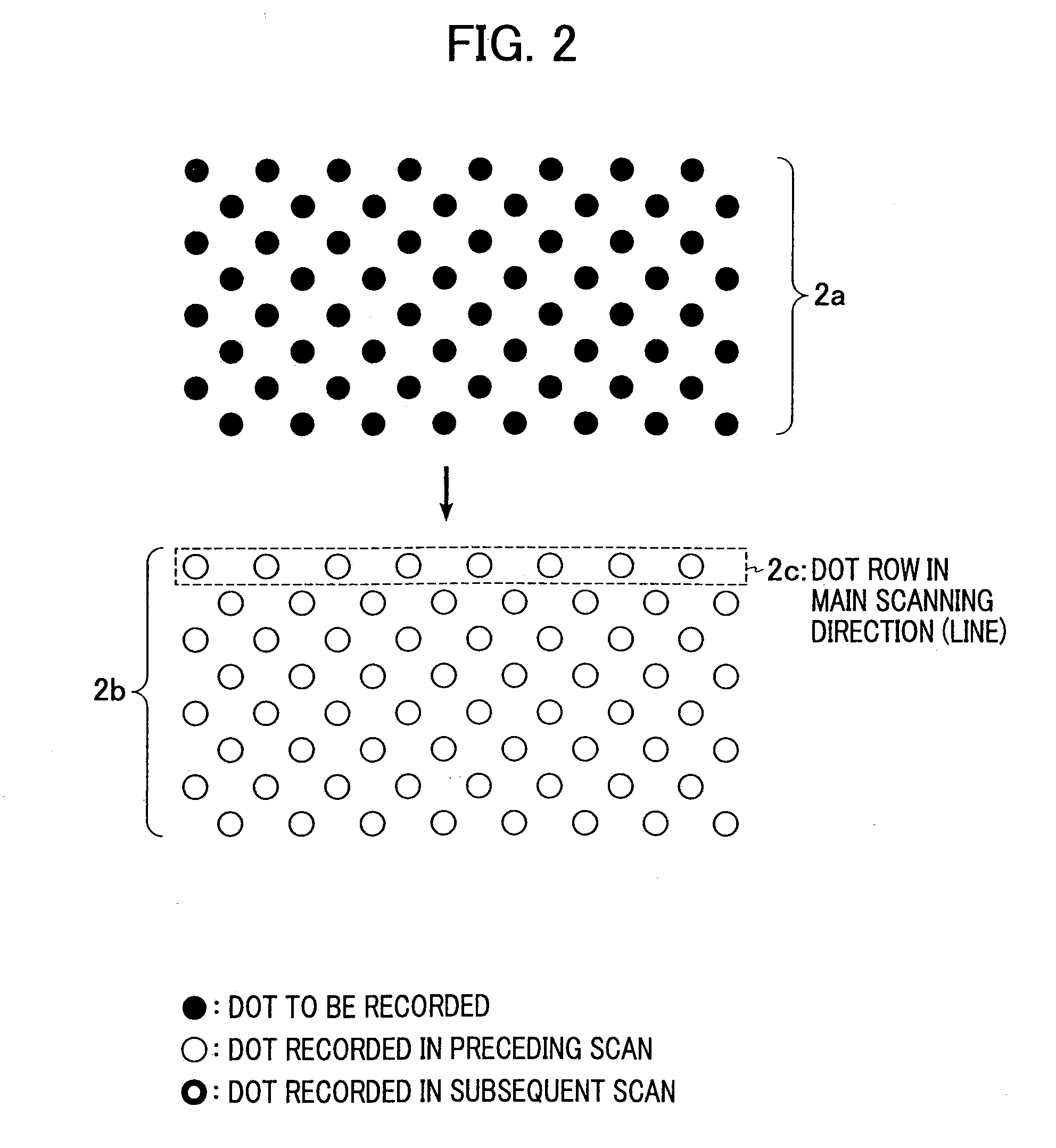Recording method and recording apparatus capable of reducing streaks and unevenness in image density
a recording method and image density technology, applied in the field of recording methods and equipment, can solve problems such as prone to problems, uneven density of recorded images, and inability to uniformly follow the main scanning direction, and achieve the effect of removing image defects
- Summary
- Abstract
- Description
- Claims
- Application Information
AI Technical Summary
Benefits of technology
Problems solved by technology
Method used
Image
Examples
first embodiment
[0050]FIG. 6 is a representation for explaining a combination of a feed amount of recording paper and a discharge port used in each scan. In FIG. 6, reference numeral 1 illustrates the recording head. In this example, a total of 16 discharge ports N1 to N16 are divided into four groups, and recording is made by allocating dots to be recorded to four scans.
(First to Third Scans)
[0051] First, in a first scan, only the discharge ports N13 to N16 are employed and ink droplets are discharged through those discharge ports which are allocated in accordance with the input image data. The term “image data” means information representing in which positions on recording paper dots are to be recorded at what a level of density. A manner of determining from the image data whether the ink droplets are to be discharged in the current scan, i.e., a binary coding process, can be implemented by any suitable one of known methods, such as simple binary coding, dithering, a method using a mask, and a...
second embodiment
[0060] In this second embodiment, an image is formed by four scans as in the first embodiment described above, but deep ink droplets are used in the recording made by the first and second scans, light ink droplets are used in the recording made by the third and fourth scans. Further, in this second embodiment, ink droplets are discharged for one pixel in six patterns, i.e., “no ink droplets”, “only one light ink droplet”, “two light ink droplets”, “only one deep ink droplet”, “one deep ink droplet and one light ink droplet”, and “two deep ink droplets”. These six patterns enable the recording to be made at 6 levels of gradation per pixel. FIG. 8 is an illustration for explaining the above six patterns. More specifically, FIG. 8 shows the six patterns at levels of 0 to 5, which are formed by applying a light ink dot 8a and a deep ink dot 8b to the area of one pixel. Note that positions where the dots are applied in one pixel are not limited to those shown in FIG. 8. For example, the ...
third embodiment
[0065] A third embodiments will be described below in connection with an example in which ink droplets are discharged in plural sizes different from each other and an image is formed by three scans. In the recording operation carried out by the printer according to this third embodiment, an image is formed in the first and second scans by discharging ink droplets each having a large discharge volume, while an image is formed in the third scan by discharging an ink droplet having a small discharge volume.
[0066] Further, in this third embodiment, ink droplets are discharged for one pixel in five patterns (at 5 levels of gradation), i.e., “no ink droplets”, “one ink droplet having a small discharge volume”, “one ink droplet having a large discharge volume”, “two ink droplets each having a large discharge volume”, and “two ink droplets each having a large discharge volume and one ink droplet having a small discharge volume”. Usually, however, the first four patterns (i.e., 4 levels of ...
PUM
 Login to View More
Login to View More Abstract
Description
Claims
Application Information
 Login to View More
Login to View More - R&D
- Intellectual Property
- Life Sciences
- Materials
- Tech Scout
- Unparalleled Data Quality
- Higher Quality Content
- 60% Fewer Hallucinations
Browse by: Latest US Patents, China's latest patents, Technical Efficacy Thesaurus, Application Domain, Technology Topic, Popular Technical Reports.
© 2025 PatSnap. All rights reserved.Legal|Privacy policy|Modern Slavery Act Transparency Statement|Sitemap|About US| Contact US: help@patsnap.com



